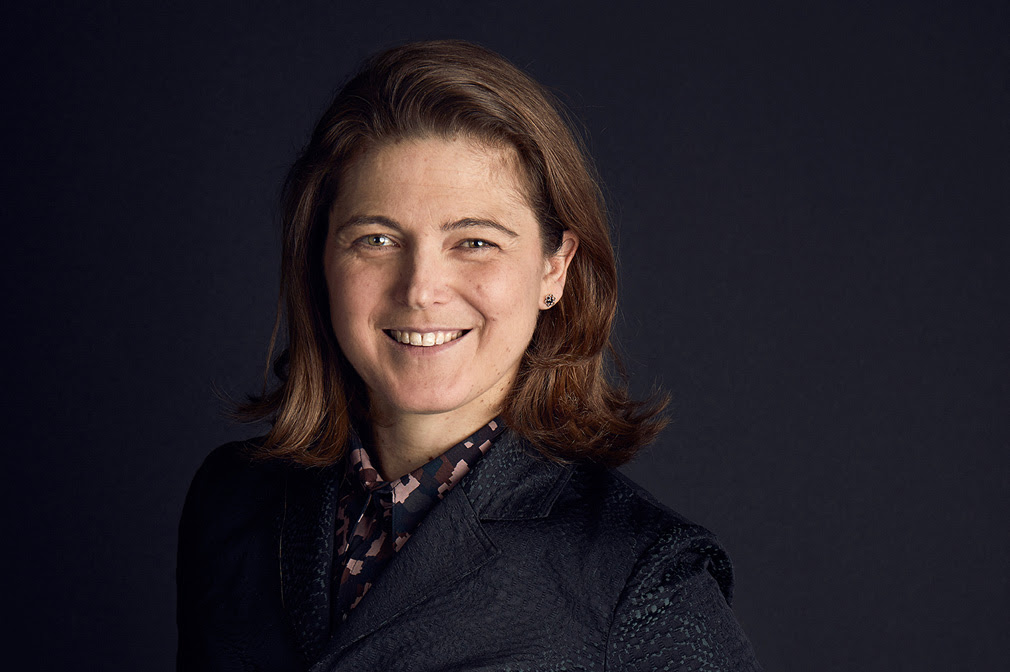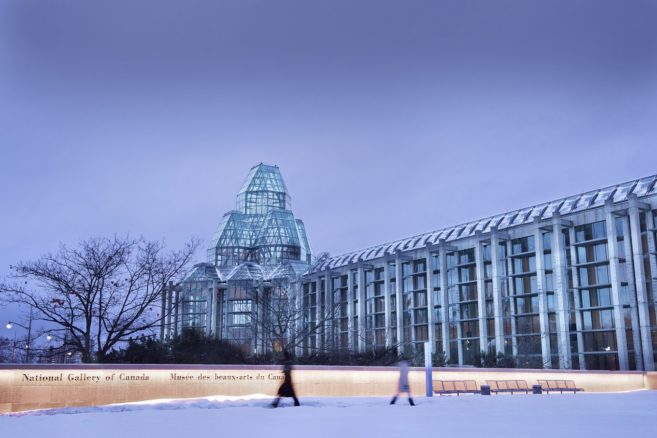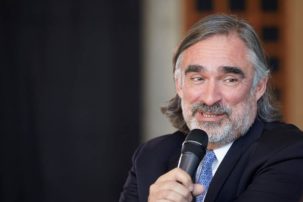“Who is she?”
This is the question I still hear from some in the arts community about Sasha Suda, the newly hired director of the National Gallery of Canada. Though well known among other curators and certain patrons, it seems, Suda was an unknown factor to many upon news of her hiring.
But, there is this too: Sasha Suda is also very smart, very strategic and very ambitious. That’s the impression I got when speaking with her for the first time this week. Why was that my impression? Many reasons, some of which I hope are clear in the interview that follows. For one, I’ve never heard a newly hired director—of any gallery—talk about the jobs they’re planning to take after the one they were just hired for. But maybe that’s a good thing—a hedge against the NGC directorship as a career-capstone assignment subject to stale energy and running down the clock.
During our conversation, Suda asked the very valid question of whether someone would raise certain concerns about her hiring as director if she was a man—particularly concerns regarding her lack of experience as a gallery director in the past. I will say I asked these questions not just because the last three directors of the gallery had that experience when hired—I asked because the NGC director job posting, now removed from the government’s website, explicitly listed “corporate leadership experience at the Chief Executive Officer or senior executive level” as its #2 criteria. (#1 was an art history degree, of which Suda has three.)
After talking with her, my hunch is that Suda will do an excellent job, or at least a very good one. But still, after speaking with her in the last weeks before she wraps up her post as curator of European art at the Art Gallery of Ontario, I wondered what her hiring had to say about ongoing concerns regarding need for better mentorship and succession at Canadian arts institutions. If the only way for a talented, ambitious young curator and arts leader to advance in their career is to move into the National Gallery of Canada director post, what does that say about advancement opportunities in the national arts ecology? What also, might it say, about the current desirability of a National Gallery post for more experienced Canadian art professionals, too?
Leah Sandals: I wanted to hear more about your interest in improved accessibility and transparency at the National Gallery—you know these are words that are tossed around a lot. Could you provide some concrete examples of how you’re going to manifest that?
Sasha Suda: Well, I need to preface this interview with the fact that I’m in my last weeks at the Art Gallery of Ontario. And I haven’t had much time to sit down with staff at the National Gallery at all. So I’m sort of in a learning and absorbing phase. And anything I’m going to be sharing with you is rather general.
I’ll say to you that I would love to bring forward a National Gallery that resonates with and reflects the place and time that we are in. So that’s a very general idea. On the other hand it’s a very powerful one. Part of transparency and accessibility is creating a program that’s as accessible as Canada’s population. It’s about making the program and the collection and innovation feel intuitive to Canadians.
For me, that will be a learning curve in terms of getting to know Canada from coast to coast to coast. My goal is to make the program feel [as exciting] to people in Alberta as much as it would be for somebody on the East Coast and in the North.
I also want to celebrate the acquisitions and the research made by the curators at the National Gallery—sharing that information and now celebrating it more broadly across departments, and pan-institutionally with the country.
I also believe strongly in education and public programming. I’m really encouraged to know that there is a team at the National Gallery doing good work in that, and I’d love to build momentum in that area.
So it’s really about taking a fresh new look—stepping into it as a sort of outsider and pushing the institution to be proud of the work that it does.
LS: As you know, the last three directors at the National Gallery were all directors of other museums before taking the National Gallery post. You have to reach about 38 years back to find the last time that someone in the National Gallery director job came from a curatorial position. What’s your message to Canadians who feel that maybe someone with directorial or CEO experience should have been hired in this job?
SS: I would say that we should all be extremely proud that in Canada in 2019, we’re inviting fresh, new, innovative individuals with a high frequency of energy into the C-suite.
Also, having curators step into directorial positions is a long tradition within art museums—I’m sure you know that as well. And it’s not always just small museums. James Rondeau went on to run the Art Institute of Chicago. Ian Wardropper at the Frick. Gary Tinterow at the Museum of Fine Arts in Houston. All of these people were curators who went on to museums as directors, and continue to drive those institutions forward.
And if I reach back [further] in the history of the National Gallery, a person I’m incredibly honoured to now be connected with is Jean Boggs, who was a curator at the Art Gallery of Ontario [before] she went on to the National Gallery and became one of its most revered directors. She began there in 1966 and went on after to teach at Harvard and run the Philadelphia Museum of Art.
I think it’s extraordinarily exciting to have the opportunity to start my career, and bring the energy and ambition and drive that I have, to the National Gallery of Canada. This is a place that will form my career and have a mark on my career for decades to come. Throughout the rest of my career, I’ll take those relationships with me. And I think that’s how we begin to have an impact on the landscape generationally on the international landscape.
And I’ll say also that the questions that are being asked of my age and the rank from which I’m coming: those are understandable as a sort of curiosity—but I wonder why there weren’t those questions for my male counterparts when they got into this role.
LS: What do you mean by “for my male counterparts when they got into this role”?
SS: Well, I wonder if I’m being asked a question because I’m a woman.
LS: I understand you wonder that—but all the other male curators you mentioned who transitioned to directors are leaders of regional museums, not national museums, as far I can tell. That’s part of what makes this position distinctive. If you compare the National Gallery to, say, the Houston art scene…maybe that’s a scale question you’re dealing with?
SS: Yes, I’m talking about scale. I think it’s an incredible honour to be at the helm of a national museum. So I’m talking about scale.
LS: How long are you planning to be in this position, do you think?
SS: Well, I have one five-year term—at this point in time renewable for a second five-year term.
LS: Thanks for answering that. One area that some other observers may have had concern about is that your primary expertise to date has been in European art. You’ve done excellent exhibitions like “Small Wonders,” great collaborations with the Met and the Rijksmuseum. But how do you respond to concerns that maybe you don’t have the expertise in the Canadian art scene, or with Indigenous art and artists, to do the National Gallery director job well?
SS: Well, I think I’m a curator with an area of expertise. That doesn’t necessarily limit me.
And I have been a part of an amazing year at the Art Gallery of Ontario that’s seen a lot of very incredible and trailblazing work in Canadian and Indigenous art. I have had the honour of being a part of that and hearing about that and learning from colleagues and I enjoy doing.
About Canadian and Indigenous art: I know that the National Gallery has some of the world’s leading experts in these areas and has built an incredible foundation to continue doing work in Indigenous and Canadian art as it relates to the Truth and Reconciliation Commission recommendations.
I also think it’s an amazing opportunity for me to come into this role as a curator who knows what curators need in their work in order to push their mission forward. It’s an amazing opportunity not only to listen and learn, but also to bring my own expertise and a life lived in research and conviction and passion to the table.
I would be incredibly open about supporting [other curators’] work. And sometimes it’s good if areas of expertise don’t overlap. It can provide staff with the space they need to do the work that they do.
LS: Speaking of staff, an employee survey released last year indicated that 57 per cent of National Gallery employees were dissatisfied with senior-management decision-making, and also had issues with lack of communication from senior management. So in many ways, a new boss is great news. How do you plan to improve—beyond the curatorial team—the employee satisfaction there? Especially given that the National Gallery has hundreds of employees?
SS: I can tell you that here at the AGO I was a part of a restructuring and bringing together of two large—large for us—curatorial departments.
I know that team sizes can vary, but for me the core principles of leadership remain the same. In that, I’m absolutely committed to developing a healthy level of communication within the NGC staff, period. That’s just something I believe in. But I also sincerely believe that leadership has to work with the organization at all levels to help to cultivate a culture that people can be proud of, and that acknowledges and values the work that everyone is putting in.
This is something that I’m really excited about engaging in. And as you say, it’s a great opportunity for me to engage with the staff on the tail end of that survey—being able to, right off the bat, address some of those concerns.
I have had an opportunity to talk with the head of human resources about this topic. And as a starting kind of principle, I’m meeting with 60 members of the staff for 30 minutes each. I want to learn from them what they think we’re doing well, and what they think we could do better—and just to get to know them a little bit as well. For me this is going to be one of six priorities within my first few months at the National Gallery.
LS: The last three directors of the National Gallery have had extensive experience in Quebec and have been fluent in French, and your own work has seemed to not be in contact the Quebec scene as much. In Canada, official bilingualism is important. And in my opinion, Quebec is one of the major drivers of the contemporary art scene in Canada. So how are you responding to any concerns about your lack of experience in Quebec and with Francophone culture?
SS: I can’t answer that anymore enthusiastically than to say I’m eager to learn. I have great colleagues in Quebec. As far as the French language is concerned, and it’s one of Canada’s two official languages, and I’m thrilled to be able to communicate in that language as I grow into the role.
I have spent a lifetime learning French—first as a student of the Ontario public-school system, and then as an art historian, a realm where French is a primary language. So I have a great foundation on which to build and I look forward to everyone welcoming me into Quebec and sharing with me what they would like to see programmed and happening at the National Gallery of Canada.
LS: Great. A last question regarding finances. The National Gallery of Canada’s latest corporate report emphasized that it’s a really competitive fundraising environment for all galleries in Canada right now. It also emphasized that infrastructure renewal is a big issue at the National Gallery. And while the government has funding allocated for building repairs into 2021, there’s also an election happening this year that could change government spending priorities and commitments. Can you tell me how you’re planning to cope with the [financial] shifts that come from being part of an institution that’s governed or affected by election cycles like that?
SS: I think that the federal government has made some really important policy that supports the national museums—not just the National Gallery of Canada, but the Museum of History and the Canadian Museum of Nature and so on.
Going back to [the 1960s], the Museums Act established a mandate around which the federal government supported these organizations. And it created a portfolio within the Heritage Minister’s oversight that would support capital and infrastructural renewal.
This is something that I’ve reached out to a couple of the other national museum directors about since my appointment, and gotten their thoughts on it. From my view, it’s an incredibly supportive group and portfolio.
So what I would say to you based on what I know is that the National Gallery isn’t alone in this. They have partners in this endeavour and they’re part of a larger landscape.
With regard to the changes within the government, [that’s] really a speculative question I can’t answer today. It’s not something I have insight into.
LS: We’re quite near the end of our allotted time. Is there anything else you want a particularly art-interested readership to know about your upcoming leadership?
SS: What I would say is that I love art, first and foremost. And I think as a result of my love for art, I believe in our museums as a crucial part of modern contemporary society.
And I can’t wait to see how that passion and that mission, for me, dovetails with all of the amazing work that the gallery staff is doing right now—and how it can resonate, continue to resonate, and resonate even more with Canadians from coast to coast to coast.
LS: Great. Well, thank you again for taking time to speak with me during such a busy period, and looking forward to seeing the new energy you bring into the gallery.
SS: Thanks. And [for] some of the more specific questions: I’m looking forward to talking to you about those after I start.

 Sasha Suda is the new director of the National Gallery of Canada. Photo: Craig Boyko.
Sasha Suda is the new director of the National Gallery of Canada. Photo: Craig Boyko.






